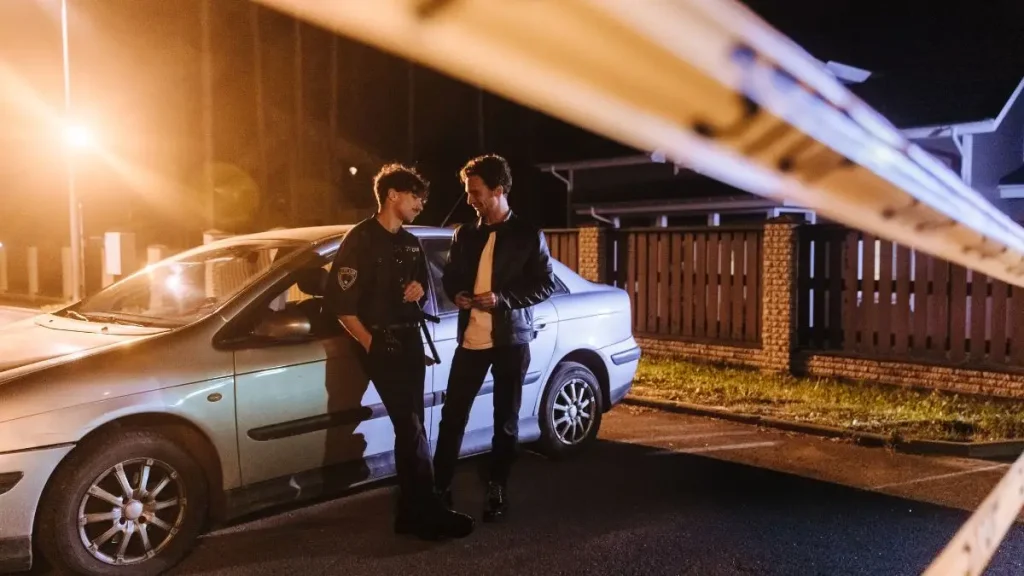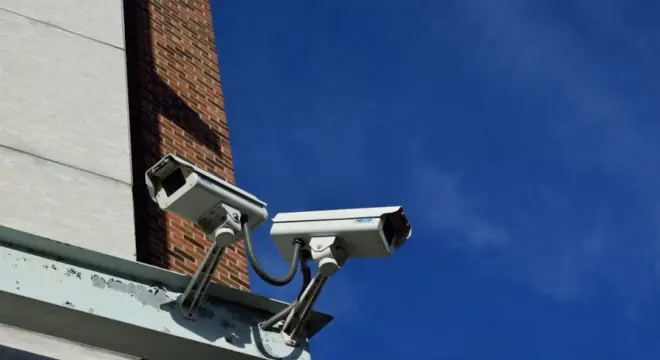Muskogee Home Incident Turns Deadly After Exchange of Gunfire with Police
I’ve seen enough headlines like this to feel a chill when the news first broke. But this one wasn’t just another police response. A 34-year-old man, Clayton Bailey, is dead after what started as a routine city visit spiraled into a deadly shootout Thursday morning in Muskogee.
According to police, a code enforcement officer showed up to Bailey’s home near South Country Club Road and Canterbury Avenue just before 9 a.m. The officer was there for what sounded like a standard complaint. But things turned fast — Bailey allegedly pointed a rifle at the officer before retreating back inside.
That’s when Muskogee’s Special Operations Team was called in. Moments later, officers say Bailey stepped outside and opened fire. They shot back. He didn’t survive.
You might think these standoffs only happen in bigger cities, or after hours of negotiation. But this was different. It happened in broad daylight, in a quiet residential neighborhood, and within minutes.
What really happened inside that home? Could it have been avoided? And why did a city code visit end with someone dead?
We’ll break all that down — step by step.
What’s your take? Do you think these kinds of police responses happen too fast — or are they necessary in moments like this? Drop your thoughts below.
What Happened Thursday Morning: A Step-by-Step Breakdown
Let me walk you through exactly how things unfolded — because this wasn’t just some random confrontation.
At around 8:50 a.m., according to News 9, a city code enforcement officer showed up at a home near South Country Club Road and Canterbury Avenue. Pretty standard stuff — maybe a complaint about property maintenance. Nothing that usually turns deadly.
But then, police say, the man inside — Clayton Bailey — came out and pointed a rifle at the city worker.
That officer didn’t try to be a hero. They backed off and called for help. And because of how serious the threat was, Muskogee Police didn’t send just a regular patrol. They activated the Special Operations Team, or SOT — the kind of unit that shows up when things can get violent, fast.
By the time officers got to the home, Bailey stepped outside again. But this time, it wasn’t to talk. According to police, he fired multiple rounds at officers. They returned fire.
He didn’t make it.
And just like that, a regular Thursday morning in a quiet neighborhood turned into a shooting scene.
Who Was Clayton Bailey? What We Know Right Now
You and I both know how fast stories like this hit the news cycle — but sometimes, we miss who the person at the center really was.
Clayton Bailey was 34. According to FOX 23, he was the man shot and killed outside that Muskogee home. But beyond the name and age, details are still pretty limited.
No criminal record has been confirmed publicly yet. And we haven’t heard from family, neighbors, or close friends.
That’s important. Because when someone’s shot and killed by police, especially in their own front yard, people deserve to understand the full story — not just a headline.
FOX23 did mention that this incident caught neighbors off guard. One local said something like this doesn’t happen in their area. It makes you wonder — was Bailey struggling with something deeper? Or was this a total breakdown in communication?
There’s a human behind every police report. And right now, we’ve only seen the surface.
A lot of real-time community alerts — especially involving home safety or armed encounters — first appear on local WhatsApp updates. These kinds of direct reports often help people spot patterns before headlines do.
Why Was a Code Officer There in the First Place?

Now this part might sound minor — but it’s actually key.
A lot of people don’t realize that city code enforcement officers aren’t cops. They’re more like inspectors. Their job is to check if your yard is too overgrown, if there’s trash on the property, or if something violates housing rules.
So why did one of them knock on Bailey’s door?
Police haven’t confirmed the exact reason yet. But it could’ve been something small — a common complaint. Maybe high grass. Maybe something left outside that wasn’t supposed to be there.
Whatever the issue was, it clearly escalated fast.
And that raises a serious question: should these officers be visiting alone when there’s any known tension? Should residents be warned before a visit?
If you or I were in Bailey’s shoes — even if there was no excuse for pointing a gun — would we have reacted better with clearer communication?
The line between “routine” and “dangerous” feels awfully thin here.
Ever seen something like this unfold in your neighborhood? I’d really like to hear what you think — were there warning signs everyone missed, or did this escalate too fast? Drop a comment.
What Happens Now: Inside the Police Investigation Process
When a person dies in a police shootout, what comes next isn’t just more press releases.
Right now, Muskogee Police are calling it an “active investigation.” That usually means the officers involved are put on administrative leave — not as punishment, but standard protocol. It gives Internal Affairs time to collect statements, review any evidence, and check if the response followed department policy.
Here’s what we don’t know yet — and it matters:
- Did officers wear bodycams?
- Will the footage be released publicly?
- Were any warning commands issued before shots were fired?
These are the questions that build or break public trust.
And let’s be real — without transparency, people fill in the blanks themselves. That’s where anger brews.
You deserve to know what really happened — not just what fits into a one-paragraph statement.
In a separate case, a man in Chicago was recently arrested as the third suspect in an armed robbery — another example of how dangerous stand-offs often stem from deeper instability.
How Common Are Police Shootouts Like This in Oklahoma?
You might think this was a rare, out-of-the-blue case. But honestly, it’s not as uncommon as it should be.
In Oklahoma alone, there’ve been multiple officer-involved shootings just in the last few months. Back in December 2024, Muskogee police shot a man who reportedly opened fire on them after a domestic disturbance. And in nearby Tulsa, similar incidents have led to fatalities — often with very few answers afterward.
What’s worrying isn’t just the number of shootings. It’s how often they follow the same pattern: routine call, sudden threat, shots fired, someone dead.
There’s a pattern — and it’s not just about crime rates. It’s about how quickly situations escalate. And whether the people involved — on both sides — had any way to stop it before bullets flew.
You start to wonder: are police protocols enough? Are community mental health services reaching the right people in time? Is anyone tracking this in a meaningful way?
It’s hard not to feel like something’s broken when “routine check” becomes “deadly shooting” — again.
Just weeks ago, a man in Delaware was tied up and robbed at gunpoint during a home invasion — a stark reminder that even residential areas can turn volatile without warning.
What We Still Don’t Know — And Why It Matters

Here’s what’s missing from almost every report out there — and it matters more than you might think.
We don’t know why Bailey reacted the way he did. Was there a past dispute with the city? Did he suffer from paranoia, PTSD, or some mental health condition?
We don’t know if the officer warned him before opening fire — or how many times.
We don’t know what his family has to say. Or if they even knew he was struggling.
And while we know bodycam footage might exist, there’s been no confirmation that it will be released — or when.
That silence leaves too much room for speculation. And when people start filling in the gaps with their own assumptions, trust erodes fast — in police, in local leadership, even in the media.
You deserve clarity, not just headlines. Until those blanks are filled in, this story isn’t over. Not really.
In fact, a similar standoff happened in Illinois where a man fired shots and barricaded himself inside his home — and that one ended with a peaceful surrender.
Why This Hits Deeper Than Just One Story?
If you’re reading this, chances are you’re not just curious about the news. You’re asking yourself what this all means.
And honestly, same.
Because whether you’re in Muskogee or miles away, this kind of incident makes you look at your own neighborhood differently. It makes you wonder — could this happen on my block? To someone I know? Over something so small?
We talk a lot about policing and safety. But stories like this show how fragile that balance is.
You’ve got a city employee doing their job. A resident reacting in a way no one expected. Officers trained to handle threats. And in the middle of it all — a moment that turned deadly, fast.
Maybe it’s time cities rethink how code visits happen. Maybe it’s time for better communication, more backup, or just more compassion.
But most of all, maybe it’s time we stop treating these incidents as isolated — and start asking harder questions.
For more real stories that explore crime, response, and safety from the ground level, check out our full Home Security section.
Disclaimer: This article is based on publicly available reports and official statements as of August 2, 2025. Details may change as the investigation continues. We aim to present facts respectfully and without speculation.


